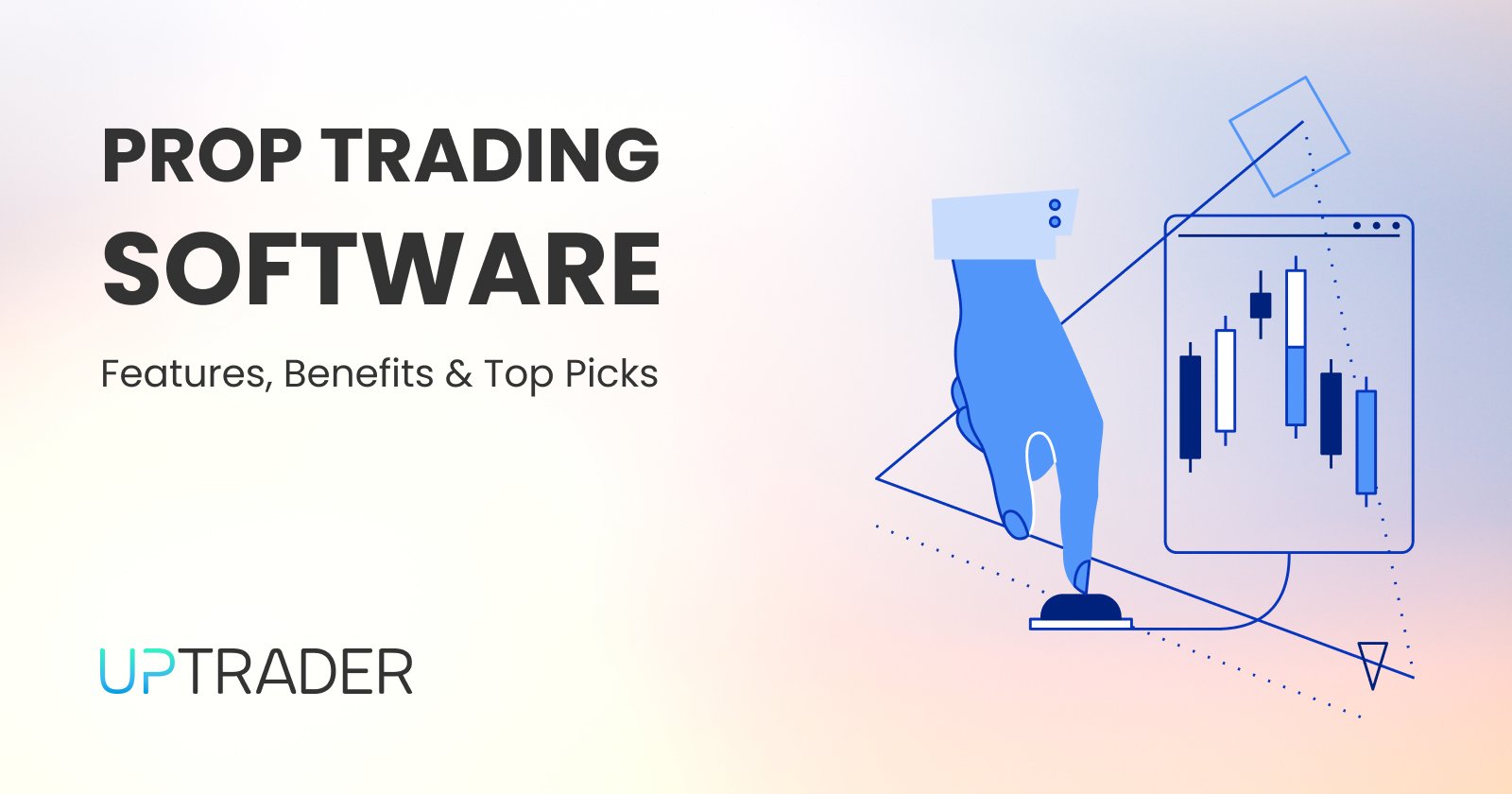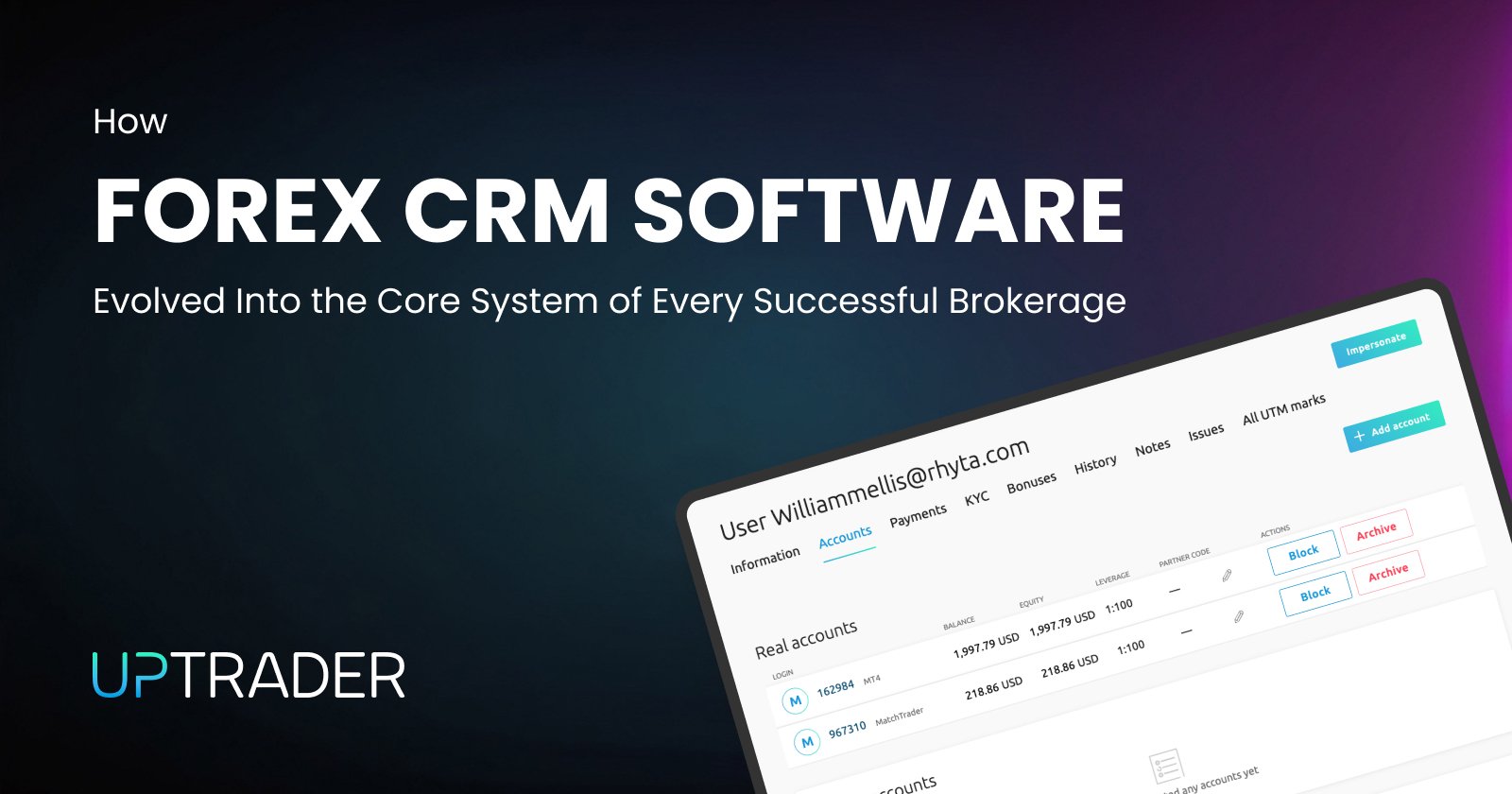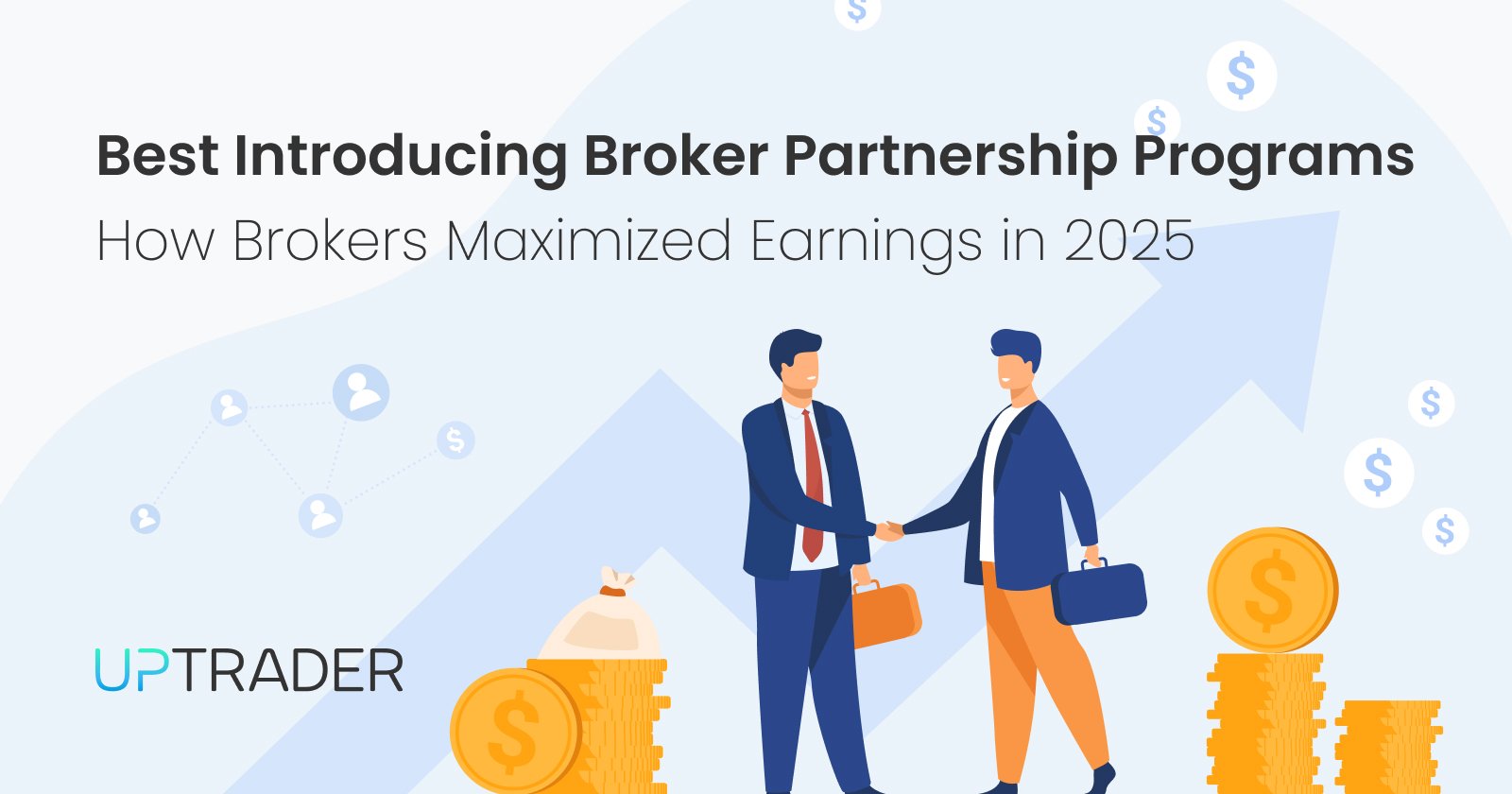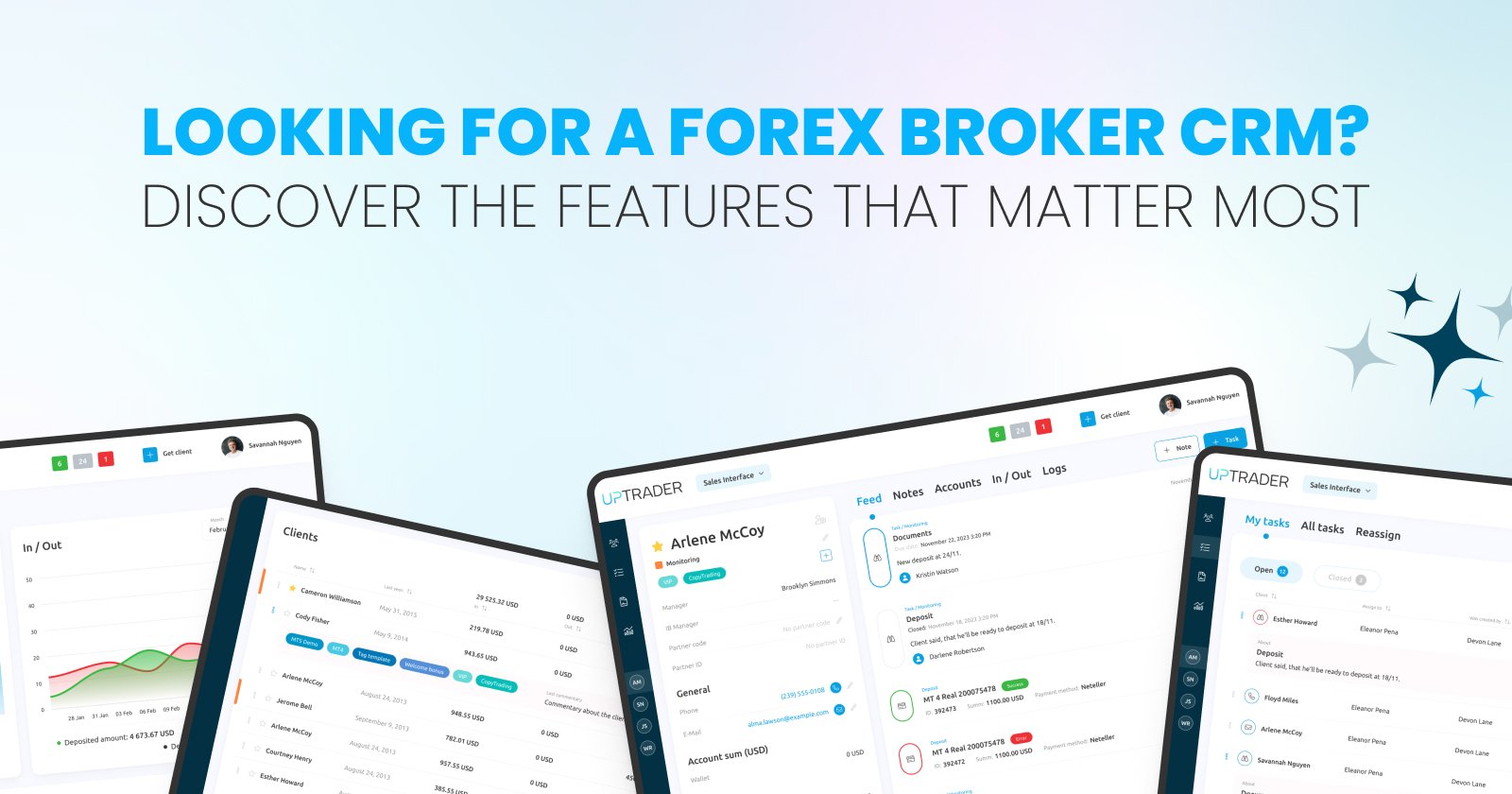Prop Trading Software: Features, Benefits & Top Picks

Share this publication:
If you are in the prop trading business, your software is not only a productivity tool, it’s a powerhouse, tending to all the vitals of your trading desks. The difference between a trader that consistently gains and a trader that gives up an opportunity is their precision and speed through the platform they are trading. At this intensity, speed and accuracy set the pros apart. You’re competing with institutions, hedge funds, and seasoned prop firms. If your platform slows you down, you’re already behind. That’s why we put this guide together: to show you what truly matters in prop trading software, the benefits it brings to your daily operations, and the platforms that stand out, which has been making waves by integrating proprietary trading features into its CRM solutions.
This isn’t theory — we’re walking you through exactly what you need to know so you can step into the markets fully equipped.
What Prop Trading Software Must Deliver
Not all platforms are created equal. Many brokers, firms, or individual traders make the mistake of treating software as a secondary detail — until latency, risk, or compliance issues wipe out their edge. From our perspective, here’s what separates the best from the rest:
1. Ultra-Low Latency Execution
Milliseconds matter. When the difference between profit and loss can come down to a fraction of a second, your software must prioritize speed. Top-tier prop trading platforms deliver extremely fast order execution through designated servers and an optimized infrastructure.
2. Direct Market Access (DMA)
With DMA, you bypass unnecessary intermediaries. You view the order book as–traded, see the genuine depth, and fire instructions that hit the inside price. For prop firms, the clarity translates to command, and DMA confers authority.
3. Custom Strategy Deployment
Off-the-shelf models collect dust. You must prototype, write, and push algorithms via clean REST APIs or compact callable libraries in C++, Java, or Python. Tight cycles between iteration and deployment widen performance gaps.
4. Real-Time Market Intelligence
Real-time market intelligence is contextual speed. Elite stacks distill order-flow motifs, paint floor sentiment, flag volume anomalies, and light liquidity halos via heatmaps, banishing guesswork.
5. Backtesting and Simulation
Stress testing precedes funding. Access to full-tick diamond-sampled historical databases, 1× speed-1× data replays, and virtualized production grids allow validation under production slice conditions.
6. Integrated Risk Management
Even the best traders make mistakes. That’s why risk tools — automated stop-loss triggers, daily loss limits, breach alerts, and compliance monitoring — are non-negotiable. The software should protect you from yourself and the market.
7. Scalability and Reliability
Scalability is surgical. One or one hundred accounts share the same pipeline. Cloud–native architectures featuring stateless containers, consistent write-behind staging, and redundant regional failover guarantee uptime when pressure peaks.
Why It Matters: Benefits That Transform Your Business
Serious prop software isn’t merely a tech upgrade; it boosts performance. Here are the benefits you’ll see:
- Sharper Execution, Cleaner Results: Speed cuts slippage and tightens fills, passing the full benefit of market moves right back into your P&L.
- Flexibility to Adapt: Calm or chaos — shift your trading tactic in a heartbeat without supplying a second of additional latency.
- Confidence Under Pressure: Embedded risk checks and compliance alerts give you the growth headroom to scale without inviting disaster.
- Clarity in Decision-Making: Real-time data visualization and predictive analytics help you make more informed decisions through mental clarity.
- Efficiency and Cost Savings: From purpose-built infrastructure and relentless automation that compress costs and widen margins.
- Psychological Edge: Relying on “battle-tested” software frees your mind to concentrate on refining the big ideas instead of second-guessing the plumbing.
Our Top Picks for Prop Trading Platforms
Below are platforms that consistently deliver the features and performance that prop traders rely on.
UpTrader
This is where we see something unique. UpTrader is not just another prop trading platform — it integrates prop trading functionality directly into its Forex CRM. For brokers or firms building out a prop model, this saves enormous time and resources. It makes launching a prop trading business simple by combining CRM, evaluation systems, and risk management in one package.
- Features:
- Challenge-based trader onboarding (from evaluation to funded account).
- Integrated performance tracking, risk limits, and profit split automation.
- Compatibility with Trading Platform 4/5, cTrader, DXtrade, liquidity providers, and copy trading systems.
- Best for: Brokers or new prop firms that want an all-in-one solution, eliminating the headache of patching multiple systems together.
By embedding prop functionality inside its CRM, UpTrader gives firms the ability to evaluate, monitor, and scale traders seamlessly — without paying extra for standalone prop modules. That’s a real edge in efficiency.
Learn more about UpTraders prop trading solution here.
QuantX ProTrade
Sub-millisecond execution, DMA, and advanced APIs serve algorithmic traders who cannot yield on precision.
- Features: rapid execution and customizable strategy deployment. Risk rule customization, real-time heat maps, webhook alerts.
- Best for: Traders who rely on algorithmic setups and demand surgical execution.
AlphaEdge Suite
For traders looking for flexibility, AlphaEdge offers a drag-and-drop visual strategy builder and code-based deployment as well. It strikes a balance between approachability and depth.
- Features: A simple UI with no compromise for performance. Advanced analytics (VWAP, liquidity absorption), adaptive architecture, hybrid workflows.
- Best for: Traders who move between discretionary insight and algorithmic execution.
TradeWave X
TradeWave X brands itself as a complete ecosystem. With cloud-native architecture, near-100% uptime, and global co-location, it’s built for firms and traders scaling at enterprise levels.
- Features: Reliability and automation on a global scale. Version control for strategies, integrated order-flow replay, anomaly detection.
- Best for: Firms or traders who need global reach with enterprise-grade resilience.
How to Choose the Right Platform
We’ve seen many traders pick software without aligning it to their needs. Don’t make that mistake. Instead, identify what matters most to your workflow.
|
Your Priority |
What You Need |
|
Maximum speed |
Sub-ms latency, co-location, DMA |
|
Full coding flexibility |
APIs, custom scripting, strategy deployment |
|
Balance between visual + code |
Drag-and-drop builders plus coding support |
|
Risk control and compliance |
Daily limits, automated stops, monitoring |
|
Testing before live trading |
Sandbox, historical tick data, replay systems |
|
Enterprise-level stability |
Cloud scaling, uptime SLAs, redundancy |
|
Integrated onboarding + CRM |
Evaluation flows, trader management, automation |
Pro Tips for Making It Work
From collaborating closely with proprietary traders and their firms, we’ve harvested straightforward lessons that streamline ramp time and defend capital:
- Start Small: Migrate only part of the execution path first. Simulate, refine, and enlarge stepwise.
- Lock in Risk Early: Lock in Risk Early by enforcing tight, practical exposure limits, revealing the system’s anomalies under peak stress.
- Keep a Trading Journal: Record latency, fill percentages, and slip amounts daily. Internal trends surface fast.
- Leverage Communities: User groups and forums are often the best consultants you never pay.
- Stay Current: Platforms grow — occasional patches bring latency drops or fresh risk-configurable levers.
Conclusion and Final Thoughts
Prop trading is competitive, fast-moving, and unforgiving. To win, you need a platform that doesn’t just support you — it amplifies your edge.
If you’re a high-frequency algorithmic trader, QuantX ProTrade’s will work for you. If you like flexibility between visual and coded strategies, AlphaEdge Suite has your back. If you’re scaling globally, TradeWave X ensures reliability under pressure. And if you’re building or expanding a prop firm, UpTrader gives you a one-stop solution — integrating CRM, trader evaluation, and prop modules in a single ecosystem.
We’ve seen the difference these platforms make. With the right choice, you’ll not only trade sharper, you’ll trade smarter — and your results will speak for themselves.
If you want to improve your prop trading firm or just want to make use of cutting-edge solutions, amazing sales modules, and many more features, visit UpTrader and talk to a consultant on our website or request a free demo for our CRM solution today!







